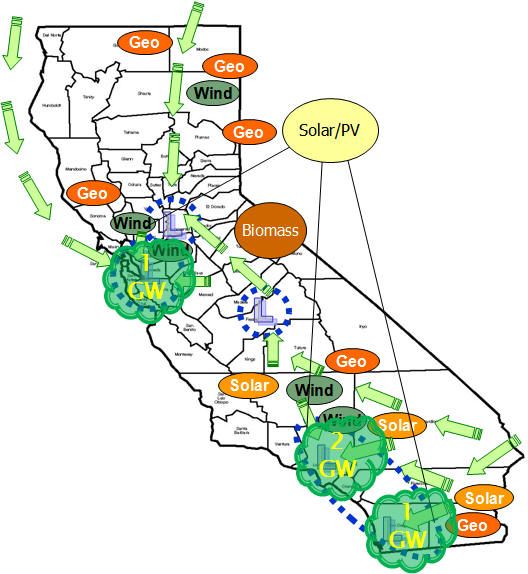Most every article or panel on energy storage labels storage as the "holy grail" or "linchpin" of a renewable energy future. Yet, the grids of countries like Germany or Spain with high levels of penetration of renewables have not collapsed for lack of energy storage. So, is storage really that crucial? Is it pricing that's preventing storage from catching on? Is it regulatory inertia? Is the technology too immature? Or is it that the business case has yet to be fully understood?
Rather than have scientists or investors lecture us on the character-building virtues of storage, next week's Networked Grid storage panel features a trio of energy storage veterans who are not waiting for technology or regulatory clarity. Instead, they are building and developing new storage technology or deploying energy storage solutions with new and creative business models.
Jacob Rikard Nielsen, Vice President of Business Development, RUBENIUS
Rubenius plans to build a first-of-its-kind energy storage warehouse in Mexico. It might be the most ambitious new energy storage project ever conceived.
It's a bold plan that will require billions of dollars, hundreds of acres of land, the alignment of regulatory stars and not a little bit of luck to succeed. But if it becomes reality, it could make fundamental changes in the way renewable energy (and conventional energy) is generated, transmitted and valued.
Rubenius refers to the concept as an "energy warehouse," and the plan is to use 1,000 megawatts of sodium sulfur (NaS) batteries funded with the help of Japan's Export/Import bank.
Rubenius has agreed to purchase land and intends to install one gigawatt of NaS batteries over the course of seven years.
The site chosen is Silicon Border’s Science Park -- developed for manufacturing high-technology products in Mexicali, Mexico. The location was chosen because of its existing infrastructure and close proximity to both the Baja California power grid and the U.S. grid, including the new Sunrise Power Grid expansion. In the United Arab Emirates (U.A.E.), the Amplex Group (a RUBENIUS subsidiary) has installed and commissioned the largest energy storage system in the world -- 350 megawatts.
Learn more about this disruptive project at next week's Networked Grid event in San Francisco, California.
Dr. Carlos Coe, Founder and CEO, Xtreme Power
Xtreme Power just officially commissioned a 15-megawatt energy storage system on First Wind’s 30-megawatt Kahuku Wind project on Oahu, Hawaii.
CEO Carlos Coe says it's the largest energy storage system integrated with a wind farm in the U.S. It's also the first renewable energy project to be completed under the Department of Energy’s loan guarantee program, which supplied $117 million for construction in July 2010.
In Coe's words, this system is different than other storage installations because "it operates in real-time to offset instantaneous power changes -- and to turn wind power from a variable supply to a nice, well-behaved power source."
Most agree that we'll need distributed and centralized storage technologies in the electrical grid to allow it to be more flexible, reliable, and to accommodate the increase in variable renewables like wind and solar. One obstacle to the economic case for energy storage has been the difficulty in extracting various revenue streams from the different storage functions.
Xtreme might have solved that.
Learn more at next week's Networked Grid event.
Edward G. Cazalet, PhD, CEO, TeMIX; VP, Megawatt Storage Farms
MegaWatt Storage Farms is a storage developer, a new entity -- like a solar developer, except with energy storage. And like a solar developer, they are somewhat technology-agnostic.
Ed Cazalet, the VP and co-founder of MegaWatt Storage Farms, believes that if California is to come close to achieving a 33 percent RPS by 2020, we are going to need at least 4 gigawatts of storage -- or roughly 5 percent of the 75-gigawatt peak system demand. Cazalet is a former board member of the California Independent System Operator and the former chief executive officer and co-founder of Automated Power Exchange.

MegaWatt, a startup with a very experienced team, looks to develop, own and operate large electricity storage facilities that connect directly to the wholesale electric grid and provide electricity storage services to utilities and other parties.
But merchant-owned storage -- owned by the customer or independent parties -- is a "substantial regulatory challenge," according to Cazalet. Is it transmission? Generation? Distribution?
Like transmission, storage moves energy from one place to another with some losses. Is energy storage a transmission asset?
Storage competes with generation. Is is a generation asset?
Is it a distribution asset?
Or is it a fourth category?
The problem is, according to Cazalet, "If a utility doesn't know whether to call it transmission, distribution, or generation -- they're not going to use it." And that debate is going on right now in the California PUC and at the FERC.
Learn more at next week's Networked Grid event.



